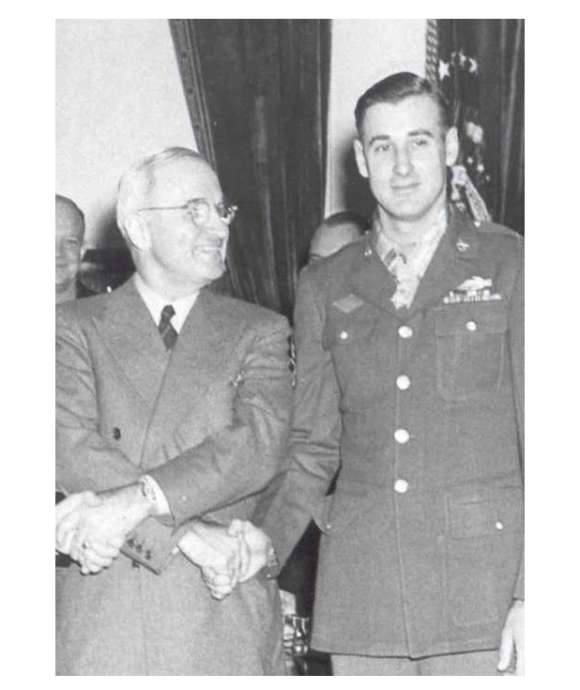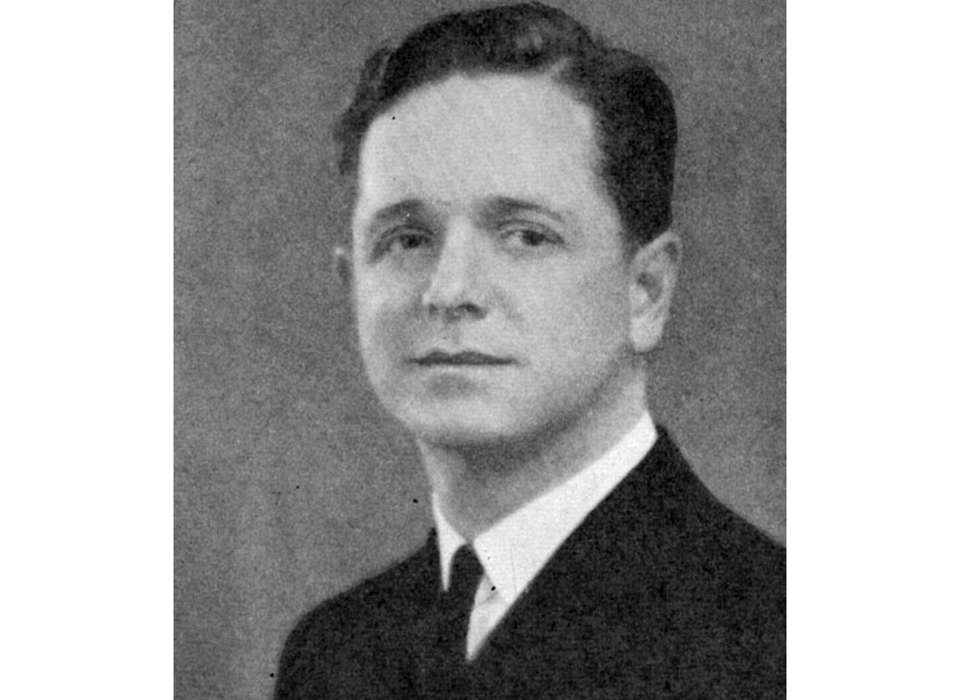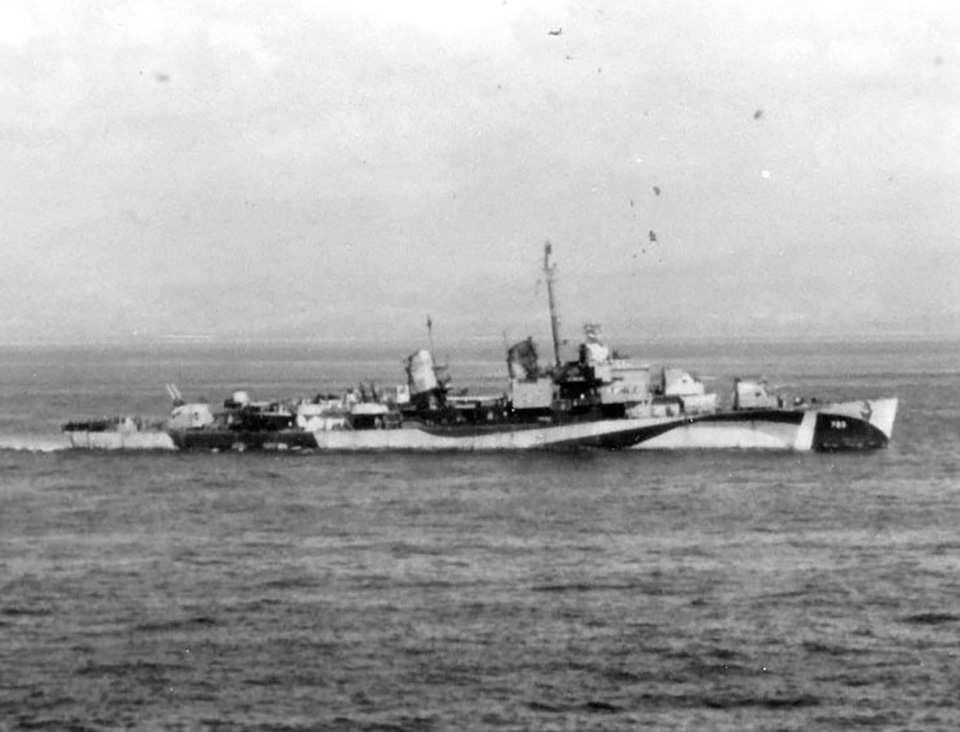Top Image: Commander George F. Davis, US Navy. Photo courtesy of Navy History and Heritage Command.
George Fleming Davis was born to American parents in Manila, Philippines, in 1911. There his father, a master shipfitter, was a civilian employee with the US Navy at the US Naval Base Subic Bay. After a few years in Manila, the family relocated to Hawaii, where Davis’ father worked at the Pearl Harbor Naval Shipyard. In 1930, Davis was accepted to the US Naval Academy in Annapolis, Maryland. At the Academy, Davis excelled in sports such as football, soccer, and boxing, but he was particularly talented in lacrosse. Having grown up around the navy in far-flung locations, Davis was noted as having a philosophy of “enjoying the present to the full, come what may in the future.” For Davis, that future was a fast rise through the ranks after his graduation and commissioning in June 1934, to the command of the destroyer USS Walke (DD-723).
On December 7, 1941, Davis was in familiar territory as a young lieutenant aboard USS Oklahoma (BB-37) at Pearl Harbor. Davis survived the attack and sinking of Oklahoma and was transferred to USS Honolulu (CL-48), aboard which he served during operations in the Aleutian Islands, naval battles off Guadalcanal and the Central Solomons, and Guam. Aboard Honolulu, Davis experienced a wide range of naval warfare, from surface engagements with Japanese forces at Tassafaronga, to shore bombardments of Solomon islands. By late November 1944, Davis, who had reached the rank of commander, was given command of Walke, which was operating in the Pacific, making strikes on Luzon.
Aboard Walke Davis led the ship as part of Destroyer Squadron 60, which screened units underway in Leyte Gulf. In December 1944, Walke assisted in landing the 77th Infantry Division in Ormoc Bay, Philippines, before turning to screen the landings at Mindoro. January 1945 began with the push on Luzon, Philippines, and on the 2nd, Walke got underway with Task Group 77.2 for amphibious assault operations in the Lingayen Gulf, where the task group was to provide fire support for landings. On January 6, Walke was engaged in fire support for minesweeping operations when Japanese aircraft approached the group. Four “Oscar'' fighters were bearing down on Walke as the crews on the antiaircraft guns sprang into action. Two aircraft were shot down by the main battery and machine guns on the starboard side of the ship as a third strafed Walke, beginning a suicide attack. Although the plane was hit by antiaircraft fire, it crashed into the aft port side of the bridge and burst into flames.
USS Walke in the Lingayen Gulf, during the landings at Luzon in January 1945. This photo was taken three days after the January 6 kamikaze attack. Photo courtesy of Navy History and Heritage Command.
Davis, on the exposed wing of the bridge, was soaked in gasoline which quickly ignited. Several sailors on the bridge who had not been severely wounded by the impact rushed to extinguish the flames that had engulfed their skipper. With the flames out, but his body badly burned, Davis refused to give up the conn, rallied his crew to keep the ship afloat, and watched as the fourth aircraft was shot down by his gunners. The ship’s bridge had been nearly destroyed, equipment and his own cabin severely damaged, and a 250-pound bomb had passed through several decks, though miraculously did not explode. After the fire was brought under control and command was shifted to the secondary conn, Davis finally relinquished control and allowed his crew to assist him below. Hours later, he succumbed to his burns. Davis died aboard Walke in the Lingayen Gulf, just hours away from his birthplace in Manila. Commander George Fleming Davis was 33 years old.
Commander George F. Davis Medal of Honor Citation
“For conspicuous gallantry and intrepidity at the risk of his life above and beyond the call of duty as commanding officer of the USS Walke engaged in a detached mission in support of minesweeping operations to clear the waters for entry of our heavy surface and amphibious forces preparatory to the invasion of Lingayen Gulf, Luzon, Philippine Islands, 6 January 1945. Operating without gun support of other surface ships when four Japanese suicide planes were detected flying low overland to attack simultaneously, Comdr. Davis boldly took his position in the exposed wings of the bridge and directed control to pick up the leading plane and open fire. Alert and fearless as the Walke's deadly fire sent the first target crashing into the water and caught the second as it passed close over the bridge to plunge into the sea of portside, he remained steadfast in the path of the third plane plunging swiftly to crash the after end of the bridge structure. Seriously wounded when the craft struck, drenched with gasoline and immediately enveloped in flames, he conned the Walke in the midst of the wreckage; he rallied his command to heroic efforts; he exhorted his officers and men to save the ship and, still on his feet, saw the barrage from his guns destroy the fourth suicide bomber. With the fires under control and the safety of the ship assured, he consented to be carried below. Succumbing several hours later, Comdr. Davis by his example of valor and his unhesitating self-sacrifice, steeled the fighting spirit of his command into unyielding purpose in completing a vital mission. He gallantly gave his life in the service of his country.”

Staff Sergeant Vernon McGarity, US Army: Medal of Honor Series
In the opening strokes of the Battle of the Bulge, platoon leader Vernon McGarity distinguished himself in combat, inspired his men, and saved lives while delaying the onslaught of German forces.
Kali Martin
Kali Martin is a former Research Historian of The National WWII Museum's Jenny Craig Institute for the Study of War and Democracy.
Cite this article:
MLA Citation:
APA Citation:
Chicago Style Citation:








![Max Fuchs, New York City cantor, sings as Rabbi Sydney [sic] Lefkowitz, Richmond, VA, conducts the first Jewish services from Germany.](/sites/default/files/styles/max_650x650/public/2025-10/image1.jpg)

